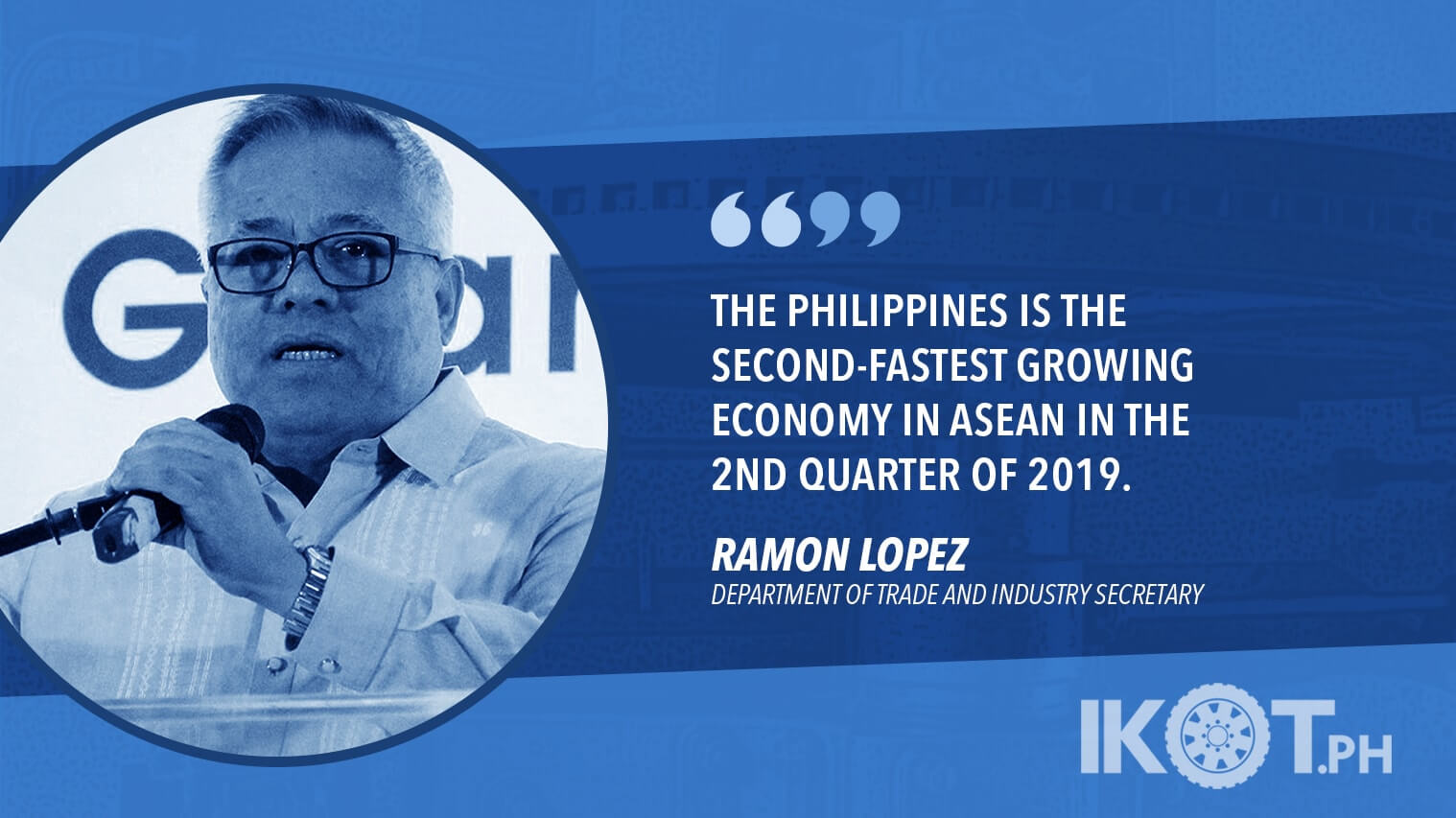The Philippine manufacturing sector showed resilience during the first half of 2019 amid a global manufacturing slowdown that weighed heavily on the world economy.
Buoyed by sustained growth in few export markets and strong domestic demand because of key economic reforms, the Philippine manufacturing sector still posted a 4.4% growth for the first half of 2019.
The country fared better compared to its peers in ASEAN (Association of Southeast Asian Nations) and the rest of the world.
“At the heart of this is President Duterte’s mission of helping Filipinos live more comfortable lives.”
“The Philippines is the second-fastest growing economy in ASEAN in the 2nd quarter of 2019, with a GDP growth of 5.5%. The Duterte administration commits to a whole-of-government approach to resolve internal factors and strategize for external factors affecting the economy. At the heart of this is President Rodrigo Duterte’s mission of helping Filipinos live more comfortable lives,” said Department of Trade and Industry (DTI) Secretary Ramon Lopez.
Lopez noted that external demand has generally been dampened by weaker economic and manufacturing activities in many economies due to the escalation of global trade tensions especially between the United States and China.
This has increased policy uncertainty and disrupted manufacturing activities in the global value chain. Moreover, supply shocks such as the El Niño phenomenon since the onset of the year have also led to the challenges in the agriculture and domestic food manufacturing sectors.
Despite these short-term challenges, the manufacturing sector’s outlook remains positive.
For one, the reduction in global oil prices and the end of El Niño would improve the supply-side situation. The electricity rate cuts that transpired in recent months may help revive manufacturing output in the near term, especially if these persist in future months. The appreciation of the Philippine peso vis-à-vis the U.S. dollar is bringing down import costs, and will help reduce the cost burden of the local manufacturing sector.
Moreover, global demand for and production of manufactured products may bounce back, which bodes well for domestic manufacturing firms’ export orders, for as long as global trade policy uncertainties begin to dissipate.
The long-term growth trajectory of Philippine manufacturing has been on an uptrend, averaging 7.3% annual growth this decade of 2010-2018 compared to only 3.2% in 2000-2009.
Furthermore, the first 12 quarters of the Duterte administration has witnessed an average manufacturing growth of 6.4%, compared to 6.3% in the same period during the previous administration.
Across sectors, manufacturing was the top recipient of foreign direct investments (FDIs) in 2018 and at the start of 2019 as well as of the Board of Investments (BOI)-approved investments last year, an indication of better manufacturing performance ahead.
The trade chief said the DTI has been an active promoter of government policies and programs that are geared toward enhancing the competitiveness of the Philippine manufacturing sector since we need all the support we can give to rebuild our manufacturing capacities.
This will help solve high importation and build capacities for export, thus addressing the long-term issue on trade imbalance.
Other strategies being pushed are the Ease of Doing Business (EODB), Inclusive Innovation Industrial Strategy, artificial intelligence (AI) promotion, micro, small, and medium enterprise (MSME) development, among others.
DTI also supports the Build, Build, Build program for infrastructure development; recently enacted laws such as the rice tariffication law which fosters a more stable inflation environment and the Philippine Innovation Act and the Innovative Startup Act—both of which would push the country to become a more innovative economy; and legislative measures that will further relax foreign investment restrictions—such as amendments to the Public Services Act, Retail Trade Liberalization Act, and Foreign Investment Act—and reforming the country’s tax system which includes the modernization of investment incentives, among others.
“These reforms will generate employment and expand the production base.”
“These game-changing reforms have positive implications for the medium- to long-term outlook of the Philippine economy including that of the local manufacturing sector. These reforms will generate employment and expand the production base that would in turn address the country’s trade imbalance,” concluded the trade head.

